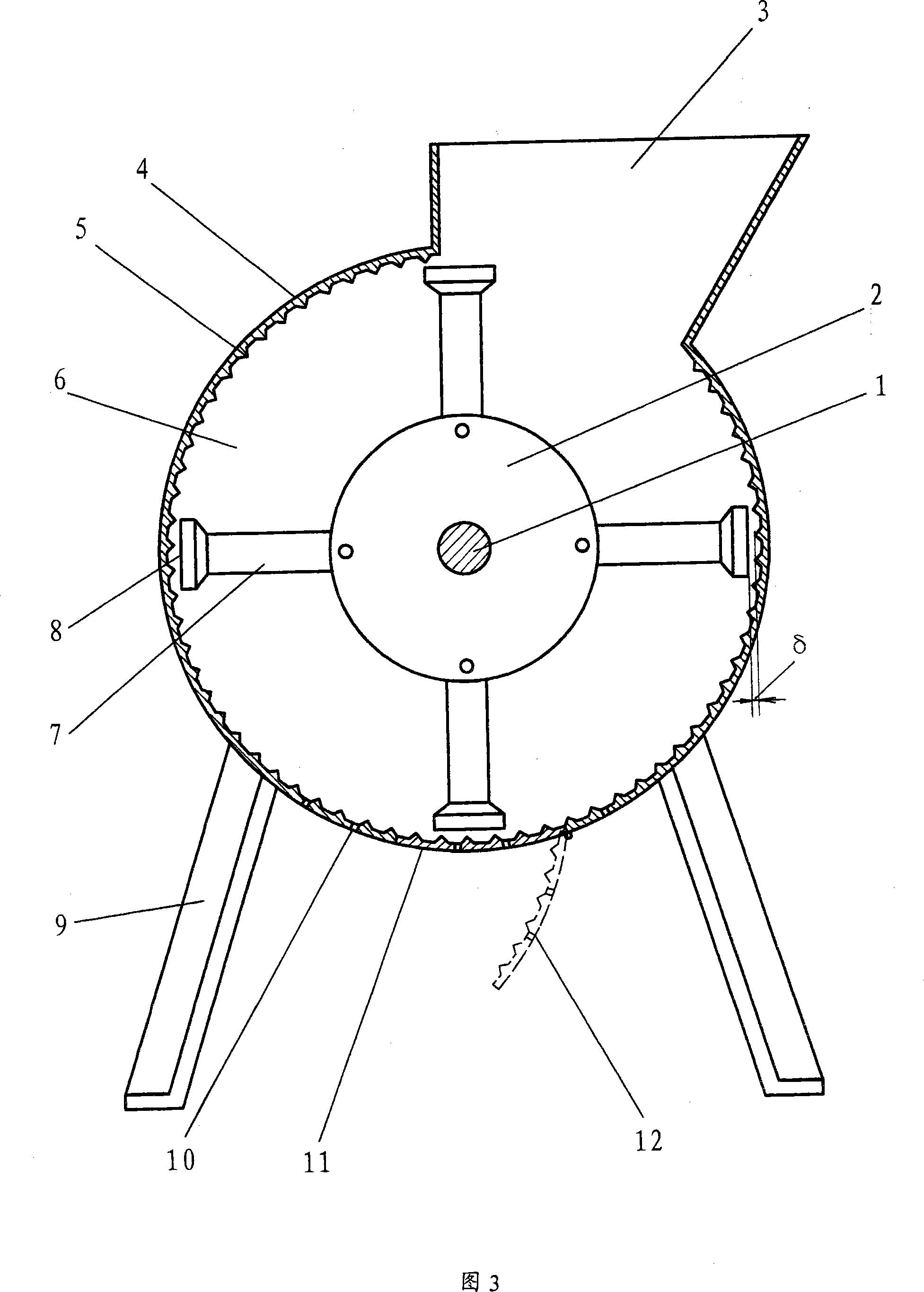Method for preparing dermal fiber cotton and dermal flocking machine
A technology of leather fiber and manufacturing method, which is applied in the field of utilization of leather leftovers, and can solve problems such as excessive leather fiber breaking and affecting fiber quality
- Summary
- Abstract
- Description
- Claims
- Application Information
AI Technical Summary
Problems solved by technology
Method used
Image
Examples
Embodiment 1
[0024] (1) Put 6 kg of American cowhide second-layer leather scraps into the container, add 100 kg of water, control the water temperature at 48-50°C, and soak for 24 hours;
[0025] (2) the soaked leather scraps are placed in a centrifugal dehydrator for dehydration;
[0026] (3) Put the dehydrated leather leftovers into the first hammering machine and hammer for 30 minutes at a speed of 1200 rpm;
[0027] (4) putting the material obtained in step (3) into the second hammering machine and hammering for 25 minutes at 1100 rpm;
[0028] (5) putting the material obtained in step (4) into the third hammering machine and hammering for 20 minutes, with a rotating speed of 900 rpm;
[0029] (6) Put the material obtained in step (5) into the fourth hammering machine and hammer for 15 minutes at 800 rpm;
[0030] (7) putting the material obtained in step (6) into the fifth hammering machine and hammering for 10 minutes, with a rotating speed of 600 rpm;
[0031] (8) the fiber mass ...
Embodiment 2
[0034] (1) Put 6 kg of American cowhide three-layer leather scraps into the container, add 100 kg of water, control the water temperature at 48-50 °C, and soak for 20 hours;
[0035](2) the soaked leather scraps are placed in a centrifugal dehydrator for dehydration;
[0036] (3) Put the dehydrated leather leftovers into the first hammering machine and hammer for 30 minutes at a speed of 1200 rpm;
[0037] (4) putting the material gained in step (3) into the second hammering machine and hammering for 25 minutes at 1000 rpm;
[0038] (5) putting the material obtained in step (4) into the third hammering machine and hammering for 20 minutes, with a rotating speed of 900 rpm;
[0039] (6) put the material obtained in step (5) into the fourth hammering machine and hammer for 15 minutes, with a rotating speed of 600 rpm;
[0040] (7) the fiber mass obtained in step (6) is placed on the needle roller opening device and loosened into dermis fiber cotton;
[0041] (8) drying at 80°...
Embodiment 3
[0043] (1) Put 6 kg of domestic cowhide second-layer leather scraps into the container, add 100 kg of water, control the water temperature at 45-48 °C, and soak for 20 hours;
[0044] (2) the soaked leather scraps are placed in a centrifugal dehydrator for dehydration;
[0045] (3) Put the dehydrated leather leftovers into the first hammering machine and hammer for 30 minutes at a speed of 1200 rpm;
[0046] (4) putting the material gained in step (3) into the second hammering machine and hammering for 25 minutes at 1000 rpm;
[0047] (5) putting the material obtained in step (4) into the third hammering machine and hammering for 20 minutes, with a rotating speed of 900 rpm;
[0048] (6) put the material obtained in step (5) into the fourth hammering machine and hammer for 15 minutes, with a rotating speed of 600 rpm;
[0049] (7) the fiber mass obtained in step (6) is placed on the needle roller opening device and loosened into dermis fiber cotton;
[0050] (8) drying at 8...
PUM
 Login to View More
Login to View More Abstract
Description
Claims
Application Information
 Login to View More
Login to View More - R&D
- Intellectual Property
- Life Sciences
- Materials
- Tech Scout
- Unparalleled Data Quality
- Higher Quality Content
- 60% Fewer Hallucinations
Browse by: Latest US Patents, China's latest patents, Technical Efficacy Thesaurus, Application Domain, Technology Topic, Popular Technical Reports.
© 2025 PatSnap. All rights reserved.Legal|Privacy policy|Modern Slavery Act Transparency Statement|Sitemap|About US| Contact US: help@patsnap.com



